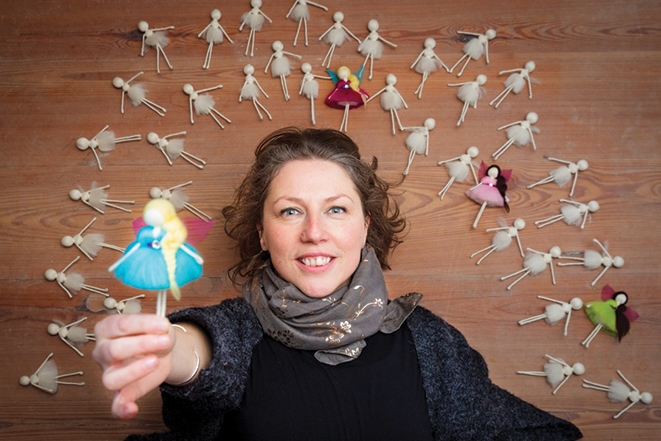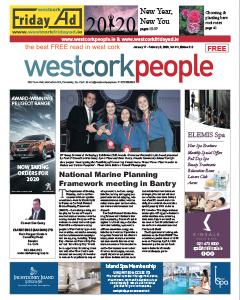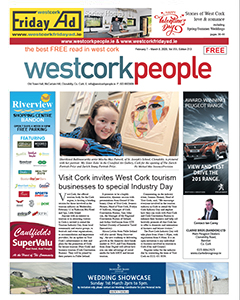Lately there’s no escaping Brexit and the uncertainty it casts over the agriculture sector. Like it has been for almost two years it’s a case of waiting to see what decisions will come from the House of Commons before there can be anything concrete done. It’s some farcical stuff and the lack of clarity is of reckless proportions. Maybe all was going too smoothly in the world. For all we know it could end up being much ado about nothing.
If the British government follow up Secretary of State for Environment, Food and Rural Affairs, Michael Goves’ threats and there are tariffs placed on Irish products then we could be in for a rough ride.
It is not the first time such an event has occurred. There was the economic war of 1932 to 1938, which saw Irish farmers endure difficult times preceding the Second World War.
But one can go further back to see similar unrest in Irish farming caused by actions in Westminster
In 1666, the British government, at the behest of English cattle breeders, introduced the Irish Cattle Bill. The Cattle Acts, as they became known, were introduced in order to benefit English landowners by prohibiting the import of cheap cattle from Ireland.
While it was eventually repealed, the act saw diversification by Irish business people and the development of a meat trade in Ireland. It forced them to think a bit differently and the same can be said today, as can be seen with Carbery’s decision to invest €78m in the diversification of its Ballineen processing facility.
Carbery investment
The investment is to diversify production and reduce dependence on the UK and will allow Carbery to move into processing new cheese offerings, primarily mozzarella.
Carbery received some €5.57m in state aid funding from the Irish Government to build the new facility, following approval by the European Commission. The construction of the project is expected to be complete by 2020.
Currently the factory at the Ballineen site produces cheddar cheese primarily for the UK market.
The investment by Carbery will increase processing capacity at the Ballineen plant to 4m litres of milk per day, making the site one of the largest diversified cheese manufacturing sites in Europe.
Mozzarella cheese is a higher added-value product for which there is a growing global demand. This move will allow Carbery to reach a wider range of customers in the global market.
Tariffs and trade disruption
Dairygold boss Jim Woulfe has warned that the cost of tariffs and trade disruption will ultimately be borne by farmers unless supports are put in place.
The Limerick native put the cost of WTO tariffs of his co-op’s cheddar exports to the UK at €50m per year, Appearing on RTE’s Prime Time, he said that, in the worst case scenario of a crash-out on March 29, tariffs of €1,671/t on Dairygold’s 30,000t of cheddar exports to the UK would amount to a tax of €50m.
He said; “Quite clearly, the first port of call would be to try to pass it on to the consumer but that won’t work on the basis that the UK is a very competitive industry already, so that’s unlikely to happen. The business can’t afford that, as we have a narrow margin industry.”
He cautioned:“Ultimately, it there isn’t any support or mechanism to help us in a transition period, it goes back to the producer.”
The Dairygold chief executive called for clarity and certainty from the Government that it would put supports in place to help co-ops alter their product portfolios away from cheddar to the British market.
The EU is aware of the potential challenges that could be ahead for Ireland. They have increased the limit on state aid for farmers in the event of a new deal Brexit. It has risen from €15,000 to €25,000.
Calving
On the home front calving has started with a grand total of one heifer having calved. Despite it being the busiest part of the year it is probably one of the more enjoyable ones for me. It’s a chance to see what the new arrivals are like and how they will be to work with for the next few years. They let you know fast. I recall getting two kicks on the kneecap from a heifer calf and that was an early yellow card for her in terms of keeping her as a replacement. She caused more trouble that autumn so she wasn’t retained for breeding. Life is too short to be dealing with troublesome stock.
There’s another five due in early March and from St Patrick’s Day onwards things crank into over drive with over half due to calf in the last two weeks of the month. It’s not so long since half the herd was calved by the end of February but this ended up in a much busier yard when there is an easier way to do things.
I prefer to calf the heifers ahead of the cows. It allows a bit more time to be spent on them and on occasion they can be slow to take to their calves. In some cases they don’t want to know about the calf at all and this results in more of a workload and space is held up in the calving area, as the pair are left in the same pen to see if they will bond.
A few weeks back I found two heifers had aborted. The in-calf heifers and the younger cows had mixed in the shed. Given they cows were confined to the slats this winter while the heifers had access to a straw bed, they ended up kicking off a bit more steam with their extra space. The ensuing row led to the two heifers losing their calves. More than one abortion was of concern and set off alarm bells. I called in the vet to see if there was any worrying underlying issue or was it a once off. All the replacement heifers were blooded and the foetuses were sent to the lab.
Thankfully results were clear so it was just bad luck. It’s one of those things that you get over. The blood tests were clear of salmonella and leptospirosis. I’ll consider doing a similar blood profile of the in-calf heifers next autumn. It will allow me to be more proactive with regard to any potential issues.
Having put my mind at ease with those two animals, one of the young bulls was off form and required a vet visit. He was a bit lethargic and not grubbing great. Thankfully it was a digestive upset and following a short treatment he’s back on the road again. This bull had a slight rupture underneath since he was born and never kicked on despite the potential of his breeding.
Further afield
My on farm issues however are a mild inconvenience compared to what Australian breeders in North West Queensland had to go through. A monsoon-type tropical storm hit the area and has left vast tracts of land under metres of water. I was onto a friend over there. His property took an inch of rain a day for ten days on the trot. This was a drop in the ocean though compared to the coastal area that is three hours drive east where they received 1.2 metres of rain in the same time period. While he was unable to leave the cattle station for a week, he was grateful to have escaped with no losses.
I was in contact with another beef producer over there running over 8,000 head of cattle on 83,000 hectares. (205,000acres)
To put a little bit of context on that to a non-farming reader that is roughly one animal for 25 acres. It’s more common to find one animal to one acre in Ireland.
He lost 1,000 head of cattle to the floods. Neighbors of his lost 90 to 100 per cent of their herds.
They had just come off the back of seven years of below average rainfall and had endured three months of temperatures in excess of 40 degrees Celcius. Then over the space of 11 days they got almost two years worth of rain. It’s difficult to comprehend and makes me appreciate the boring weather we get to deal with here.
I can’t imagine what it is like to deal with something like that. How would you deal with the emotions of initially welcoming a decent days rainfall and that turning to horror, as it doesn’t stop. The current estimates are that in excess of 500,000 cattle were lost. To put that into context that is about the same as losing the amount of dairy cows in Cork and Limerick.
And we thought we had it bad last March and April when the rain wouldn’t stop. Those conditions are balanced out by the perfect grazing conditions experienced on many farms this Spring. Let’s keep our fingers crossed for more of the same for the rest of 2019.
TOP PHOTO: Heifers in the calving shed before calving season gets underway. Pic: Tommy Moyles




